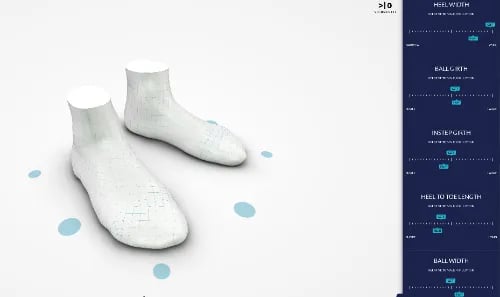After attending the NRF Big Show I came upon three tech solutions retailers are using to bolster their in-store efforts and fight back against Amazon.
While most of the ideas shared at NRF revolved around making stores into Amazon Go with no human interaction, these three liven up a shopper’s in-store experience by personalizing it, by suggesting specific best-selling add-on, and by freeing up time spent on order picking.
While technology that enables grab and go makes for great PR, for most retailers, and most consumers, many current technologies are solutions looking for a problem. In fact, in the recently completed survey I did with Oracle NetSuite and Wakefield, we found nearly all retailers (98%) believe that VR or AI will increase foot traffic, by 12% more on average.
However, the majority of consumers (67%) are not any more likely to walk into a retail store that features VR and AI. This points to the reality that a lot of tech is not actually making a difference to consumers.
The following three products will...
Volumental is a new tech solution that helps customers get what they want – shoes that fit. If you sell shoes or boots, you should already know how important it is to measure your shopper’s feet. Yet the reality is that employees don’t want to use a Brannock device to do that.
Enter Volumental.
 They provide a 3D scan of each shopper’s feet that shows their precise measurements including arch, height, and ball of foot width. Not only does this allow store employees to fit each customer exactly, it also matches specific foot shapes to individual store inventory and makes product recommendations.
They provide a 3D scan of each shopper’s feet that shows their precise measurements including arch, height, and ball of foot width. Not only does this allow store employees to fit each customer exactly, it also matches specific foot shapes to individual store inventory and makes product recommendations.
The store employees are able to meet a customer’s needs, learn more about their feet than they ever could learn before, and give them a custom fit in the process.
This means nothing less than a whole rethinking of the customer experience. Now, instead of a shopper wandering through your store looking for styles they like and then trying to find a pair that might fit, the new goal is to get each shopper’s feet scanned first.
From that information, they can show you exactly what they have that will fit your feet. This keeps shoppers from getting their hopes up for a shoe they like only to be disappointed when they can’t find one that fits. This frees up time for the shopper and can add to additional purchases if the entire store gets behind this technology.
Here's their video explanation:
Tore-E is a tech solution that connects online and offline shopping data in your area. Taking advantage of this real-time, combined-sales data, the app reveals what might seem to be random bestsellers in your store and directs the manager to merchandise these items together in displays.
Managers then share the information with their salespeople and has them role-play so they can sell both products, rather than just one. The manager then takes a picture to show district managers they have complied and re-merchandised the SKUS.
By the way, the app only lists the top ten items, so this is all easily managed on a weekly or even daily basis.
IAM Robots originally developed robots as a warehouse solution to creating more efficient order-picking. It has now developed a robot for in-store use.
As more and more consumers order online and retailers use stores for fulfillment, there simply isn’t a way to pick all those orders and maintain customer service. IAM Robots is looking to solve that problem so shoppers get merchandise on-time and labor costs are able to be managed.
One of the big surprises for me at NRF came at an event hosted at the Swedish Consulate where one of the panelists described privacy concerns by consumers. He said they gathered focus groups and showed them all the personalization possible - everyone loved all of it.
He then created a long, if not longer list, showing what data they would need to collect to be able to deliver that personalization. Surprisingly, most consumers were fine with it. Where did consumers draw the line? On facial recognition. Americans did not want to be recognized by face scan.
That’s really interesting because all those photos people have tagged you in online have built a digital facial file.
It’s not that the techies don’t already have that information, but that consumers feel they still have control over it.
My guess is we’ll see this technology become commonplace in the next few years, regardless of current privacy concerns.
In Sum
This is just the beginning of technologies that will heighten the in-store experience for the shopper and deliver higher sales for brick-and-mortar retailers.

